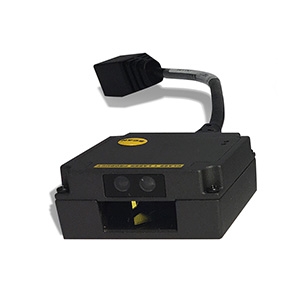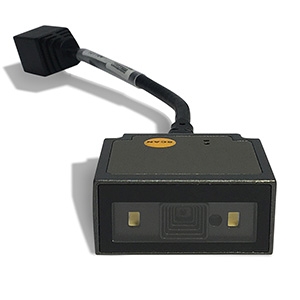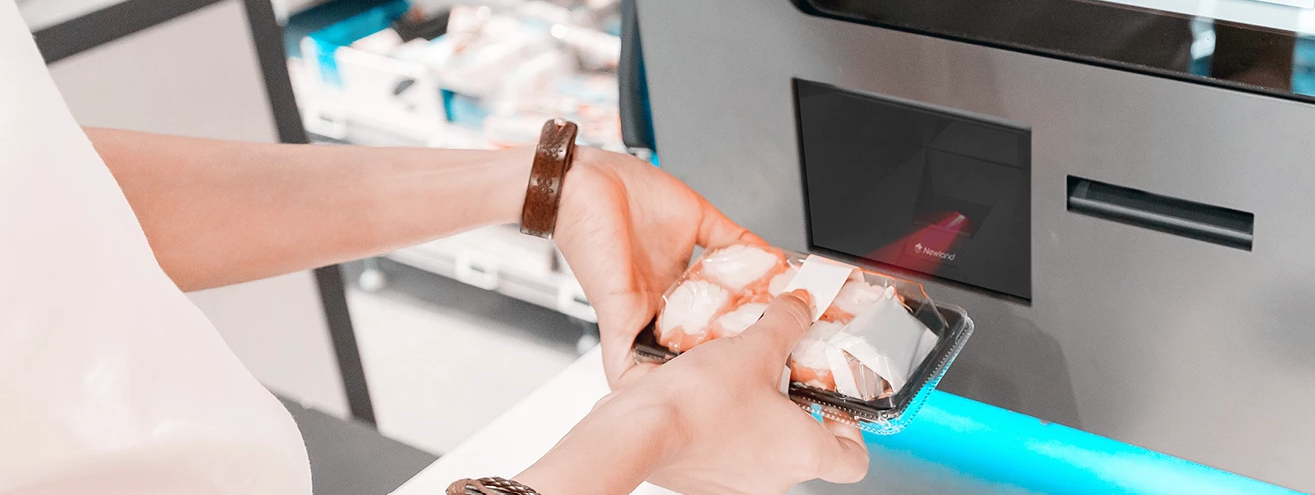Modern vending machines, kiosks and parcel collection points all face the same challenges, how to ensure the connected barcode data capture solution is mounted safely and yet is still able to be accessed easily and managed effectively.
The use of external hardware creates potential clash points where passing traffic in the form of users, personnel, equipment or even vehicles can come into contact with the scanning devices, usually resulting in a breakage of the scanner when it inevitably falls to the ground. The alternative and much safer option to take then is to embed the barcode readers internally within the machinery, and so position them away from any potential passing hazards or interference.


Mounting:
Embedded barcode scanners are small in size (approx 50X40X25 mm) and are typically supplied with mounting holes on the base so that it can be easily screwed to an internal surface in any direction. They can be positioned so that they point directly out towards the operator, or alternatively can be mounted in such a way that it reads barcode cards or tickets within an internal recessed compartment and pointed downward away from any eyelines.
Lighting:
This is where the standard features of an embedded barcode scanner become even more valuable by ensuring that sufficient lighting is generated in order to be able to successfully read barcodes, even in dimly lit areas. Hardware illumination settings can be adjusted accordingly to suit the unique environment where the scanning device is being deployed.
Connectivity:
Typical embedded barcode scanners are supplied with either an RS232 or 2 metres USB connection, however it's worth noting that there are also shorter versions of the USB cables available too that provides an alternative approach to coiling up any excess cable inside the vending machine.
Programming:
Whilst many applications will be able to be covered by the units default settings straight out of the box, the more advanced installations may require additional programming of the device to enable validation of the data being output to the host.
Options for managing settings include:
- Barcode Validation - Type (Symbology) & Code Length
- Check Barcode String Content
- Add Prefixes & Suffixes
- Data Editing - Removing or Replacing parts of the barcode string
- Light & Illumination Level
- Scan Modes - Printed Labels or Phone screens
- Volume Control
- Interface Type
Programming method options include : Direct connection to the device via a USB or Serial cable, or alternatively the reader can be programmed by generating a custom "Programming Barcode" that edits and saves settings to the reader with a simple one off barcode scan.
The obvious benefits here are that the administrator doesn't necessarily require internal access to the hardware in order to program or make changes.

Cost:
Another benefit of using embedded barcoded scanners is the relatively low cost attached to them when compared to using handheld or external mounted options. Handhelds invariably require additional mounting accessories that increase the overall costs.
Typical starting costs for embedded barcode scanners are circa £100.00 for a simple 1D reader rising to around £150.00 for a more advanced 2D scanner (+VAT).
Options:
A lot will depend upon the specific application but once the requirements of the scanner are fully understood, we can help guide you to the correct solution for your needs. A free pre-sales consultation over the phone is usually all that's required before we can then recommend any units for trial.
Please Contact us via email: info@hub-autoid.co.uk or vai Telephone: 01509 357080 to discuss your options.

